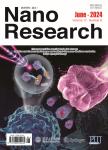Structure engineering of PtCu_(3)/C catalyst from disordered to ordered intermetallic compound with heat-treatment for the methanol electrooxidation reaction
作者机构:Institute of New Materials&Industry TechnologyWenzhou UniversityWenzhou 325024China Institute of Microscale OptoelectronicsShenzhen UniversityShenzhen 518060China
出 版 物:《Nano Research》 (纳米研究(英文版))
年 卷 期:2022年第15卷第5期
页 面:3866-3871页
核心收录:
学科分类:07[理学] 070304[理学-物理化学(含∶化学物理)] 0805[工学-材料科学与工程(可授工学、理学学位)] 0703[理学-化学] 0702[理学-物理学]
基 金:This work was supported by the National Natural Science Foundation of China(Nos.51872209 and 51972239) the Key programs for Science and Technology Innovation of Wenzhou(No.2018ZG005).
主 题:methanol electrooxidation PtCu_(3)alloy catalyst lattice compression composition reconstruction heat-treatment
摘 要:Platinum based alloys are hereinto the mostly used methanol oxidation catalysts.However,there are limited ways to improve the methanol oxidation reaction(MOR)performance of catalysts in terms of both activity and stability.Herein we developed a simple heat-treatment method to synthesize PtCu_(3)/C intermetallic compound catalyst with lattice compression.The as-prepared PtCu_(3)/C-1000 exhibited high specific activity of 3.23 mA·cm^(-1) and mass activity of 1,200 mA·mgPt^(-1),which is much higher than the PtCu_(3)/C-untreated and commercial Pt/C catalysts,respectively.The XAS and DFT results shows the high activity of the catalyst towards MOR comes from the tightening of the Pt-M bond,which leads to the decrease of Fermi energy level and the make it difficulty in adsorbing carbon intermediates,thus releasing more active sites to promote the improvement of MOR performance.Moreover,the PtCu_(3)/C-1000 shows better stability which is due to the surface-rich Pt prevents Cu from dissolution.



